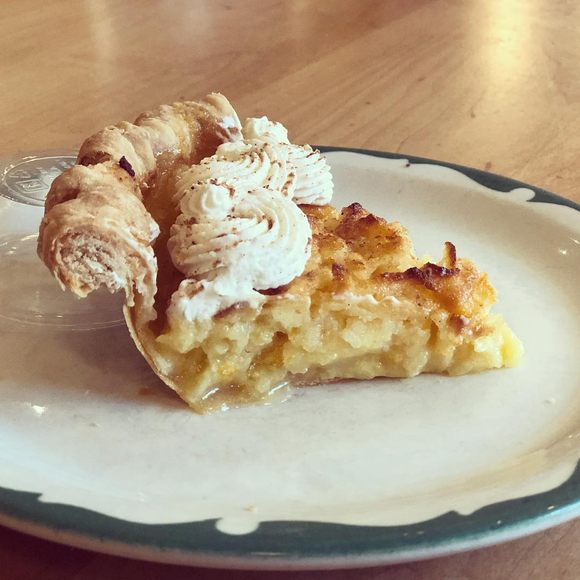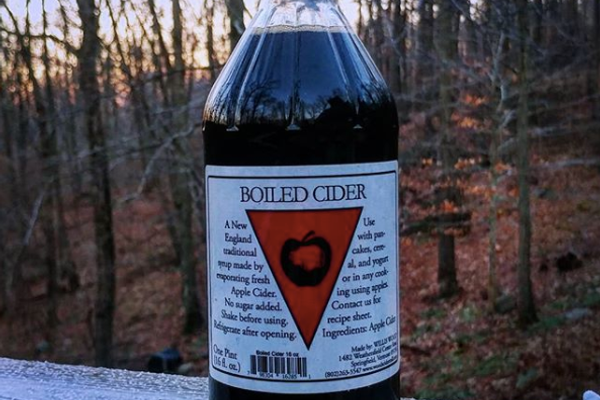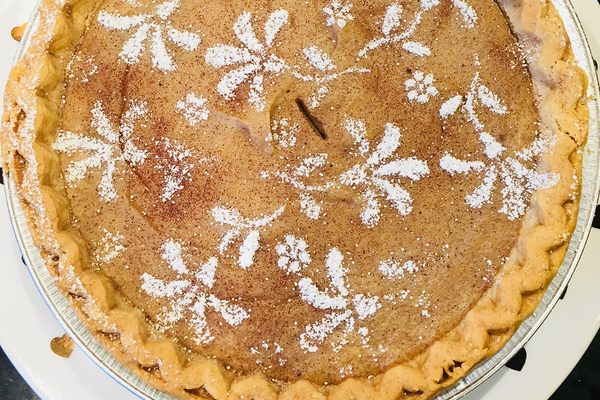Sweets
Marlborough Pie
A custardy twist on apple pie finds delicious use for fruit reaching spoilage.
There’s no telling if Marlborough pie truly originated in Marlborough, Massachusetts, or even Marlborough, England. But what is certain is that if you come across a slice, find a fork and dig in.
This historic pie is rarely sold at the store today, but it appeared on the American table with the early English settlers. Mostly, the invention of Marlborough pie is credited to the necessity of using up apples nearing spoilage. A single-crust pie with a custard filling, Marlborough pie was initially called Marlborough pudding, in the English manner. The first recipe on record is as old as 1660, appearing in an English cookbook called The Accomplisht Cook. It was a whopper, calling for the yolks of 24 eggs, beaten with cinnamon, sugar, and butter, to which minced apples and citron were added. The citrusy filling was baked in a puff pastry crust. Nutmeg and sherry were common flavor enhancers, and sometimes the apples were macerated in lemon juice. The pie made its first appearance in an American cookbook in 1776, in Amelia Simmons’s American Cookery. In the late 19th century, Marlborough pies were staples at Thanksgiving celebrations in New England. In the 20th century, they had a brief renaissance, loaded with citron and raisins, and resembling a fruitcake.
Aside from a few home cooks curious about re-creating historic recipes and celebrated English chef Rick Stein (who makes a version in his Marlborough restaurant), the dish has all but disappeared. Food historians are unsure about why it’s become so rare. Perhaps it was the labor-intensive baking, or the trick of getting the custard just right. Perhaps there are better ways to store apples today, without worrying about what to do with rotting fruit. Perhaps because apple pie with sliced apples, in a sweet-tart filling and a buttery double crust, is the pinnacle of piedom, which no other apple pie can ever hope to reach. Whatever the reasons for its demise, the time might have come to resurrect it from the annals of history, armed with cooked or grated apples and the determination not to curdle custard.
Where to Try It
-
Rick Stein Marlborough Website
Lloran House, 42a High Street, Marlborough, England, SN8 1HQ, United KingdomRick Stein makes Marlborough pudding with Bramley apples, with a glazed Italian meringue on top, and served with Bird’s custard, a British staple.
-
Old Sturbridge Village Website
1 Old Sturbridge Village Road, Sturbridge, Massachusetts, 01566, United StatesAround Thanksgiving, historical enactors, called interpreters, make the pie at the farm in this outdoor history museum depicting rural New England from the 1830s. But historically-accurate hearth cooking renders the pies not food service–friendly, so, while you can watch it being made, you won’t be allowed to eat it.
Written By
 Rohini Chaki
Rohini Chaki













